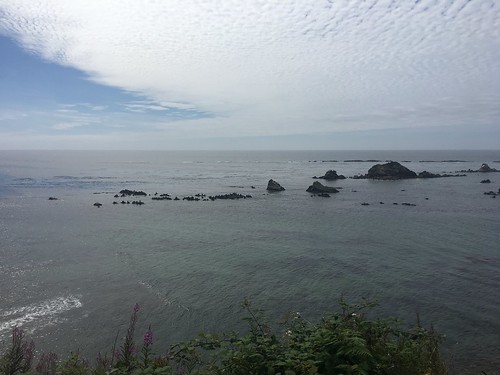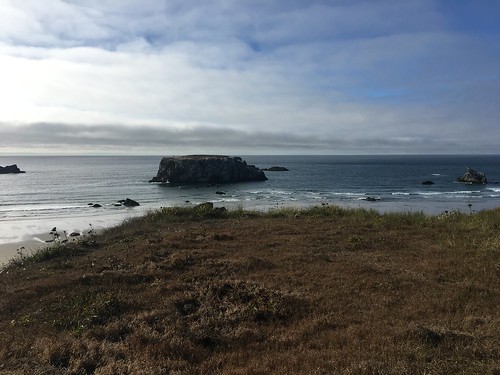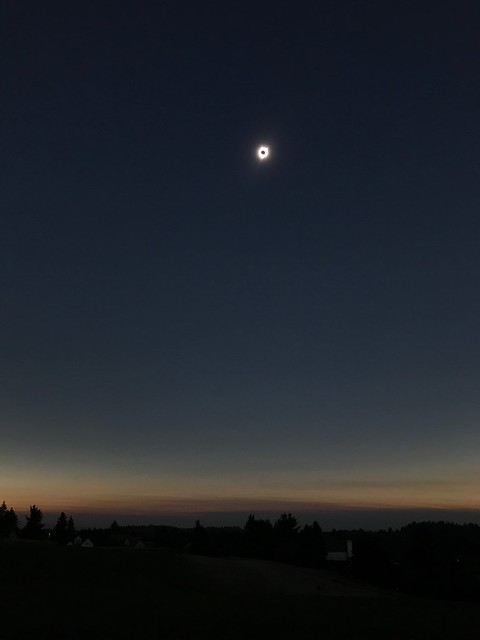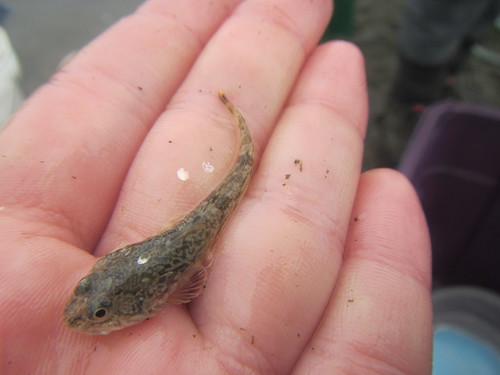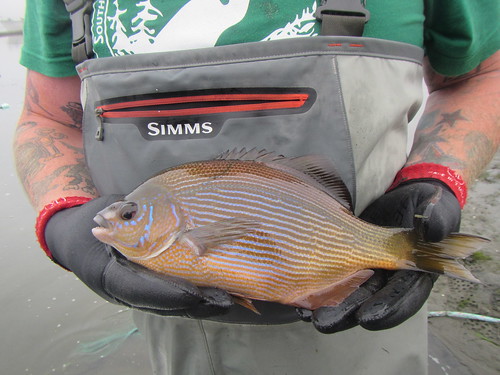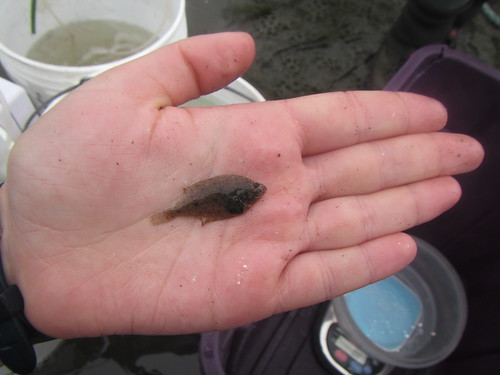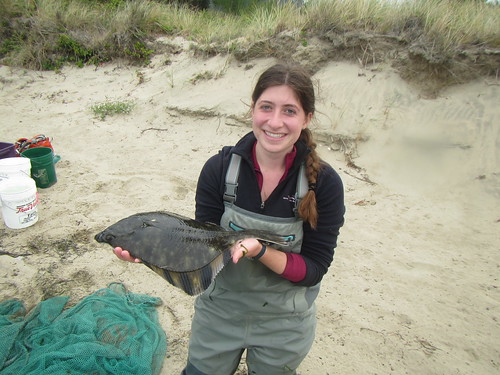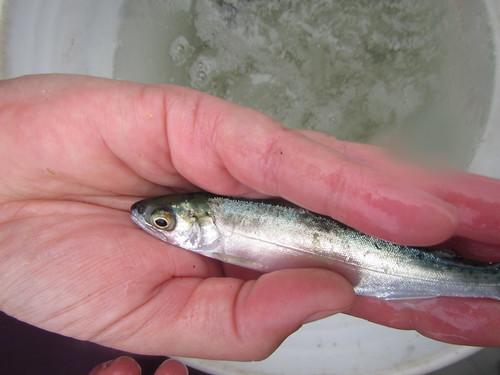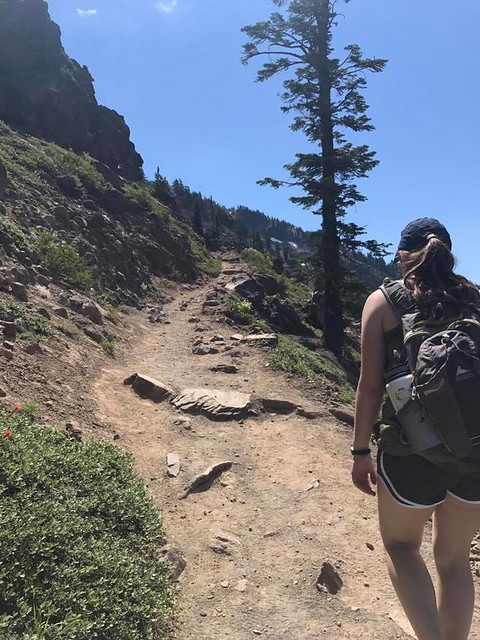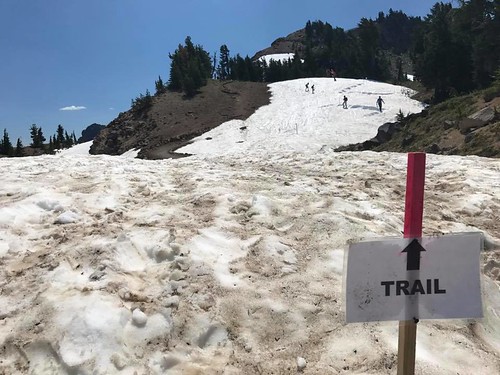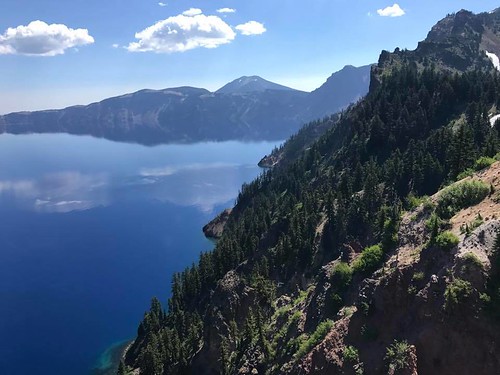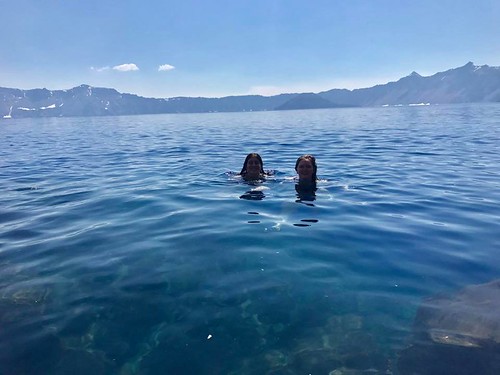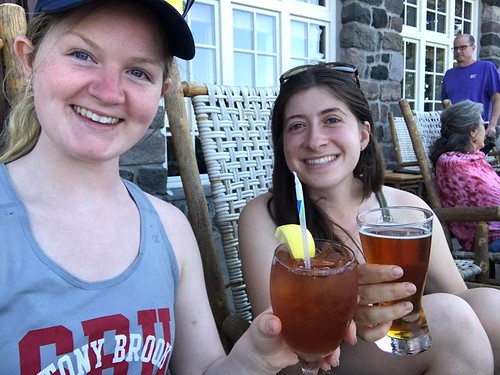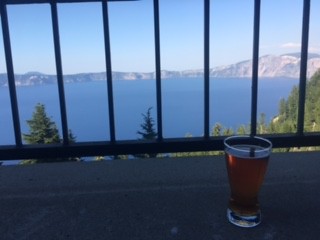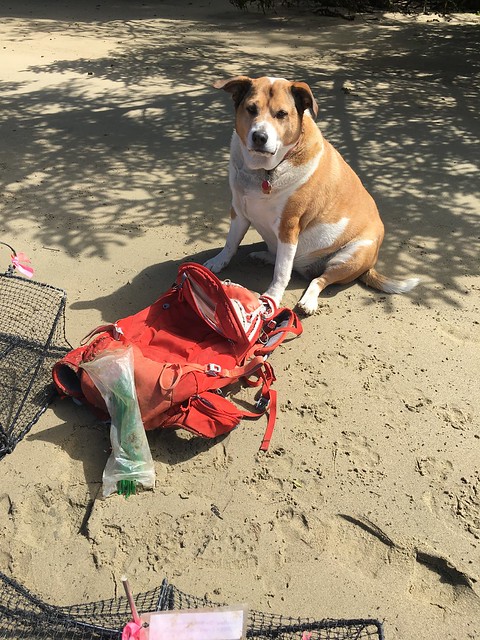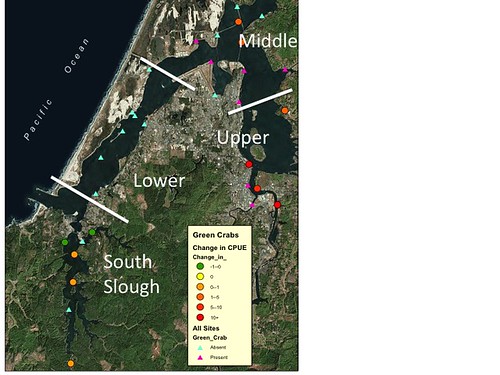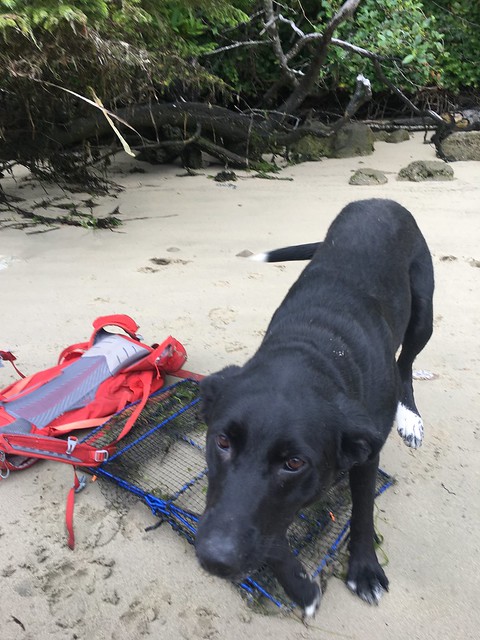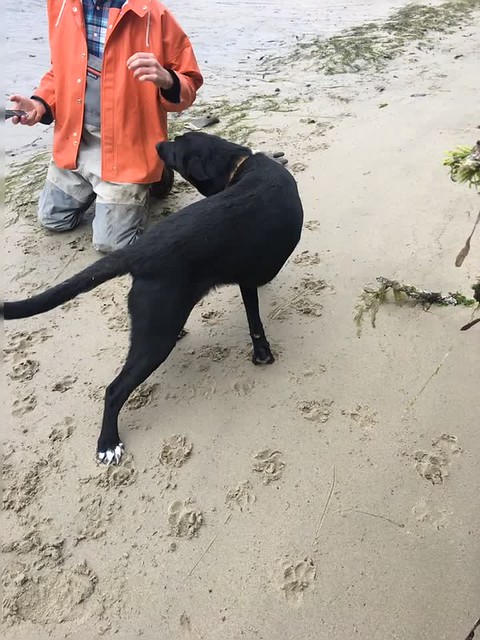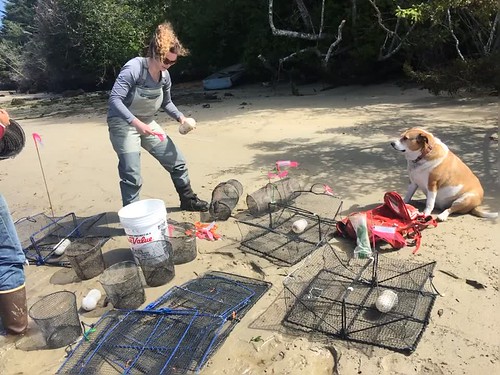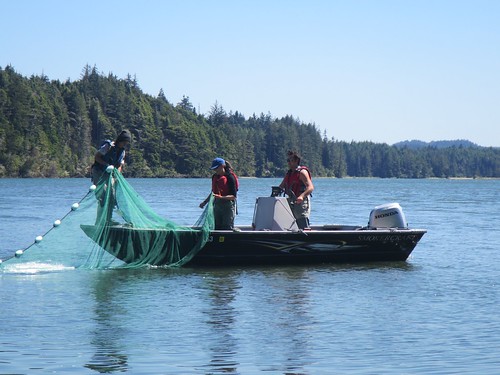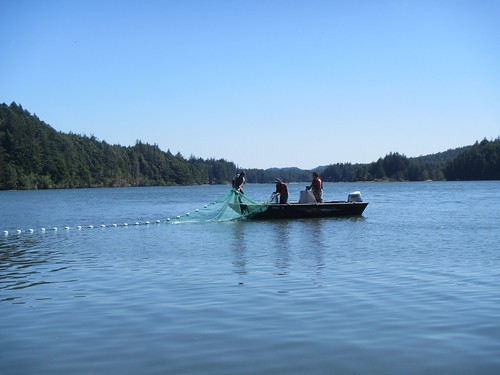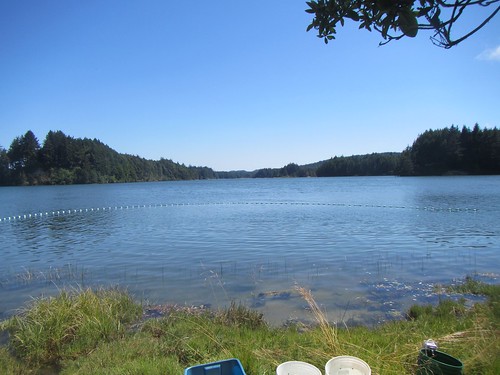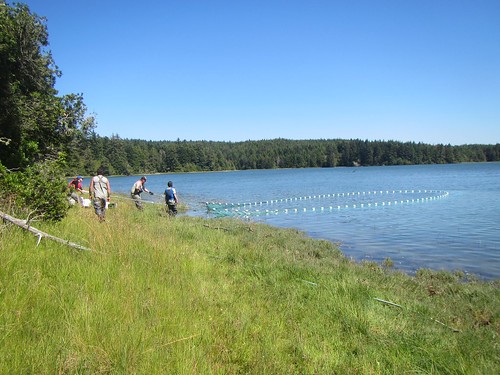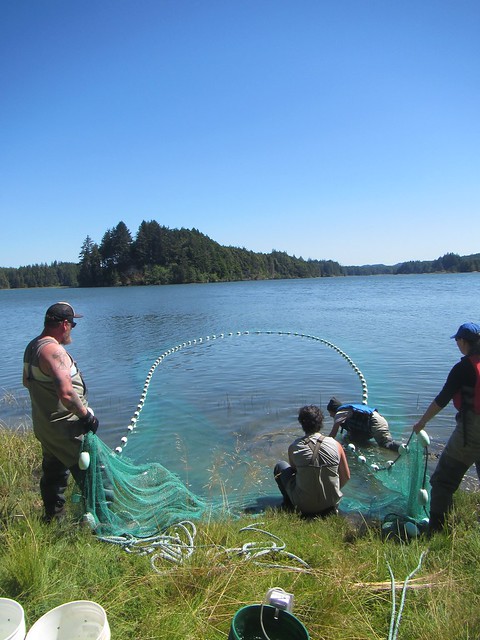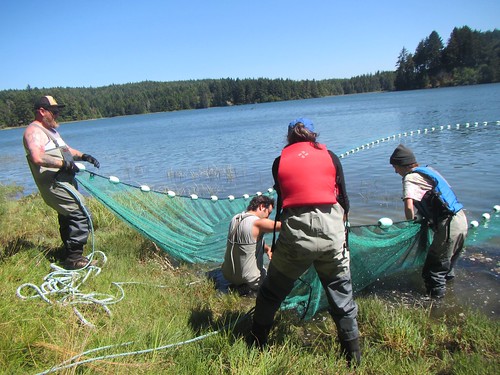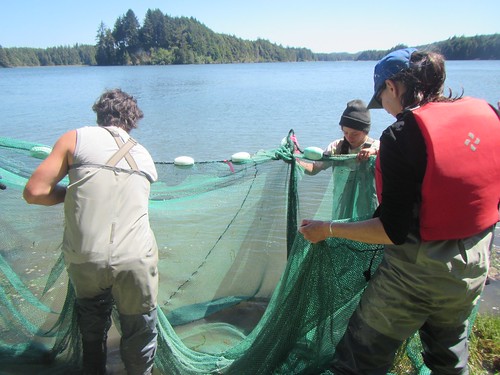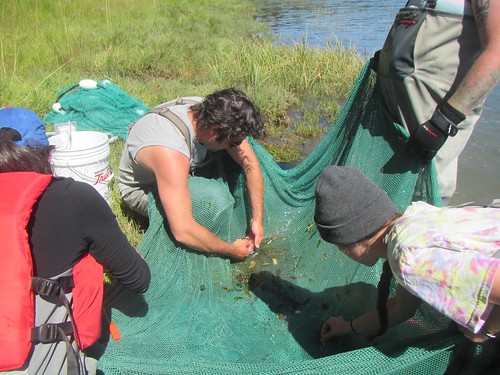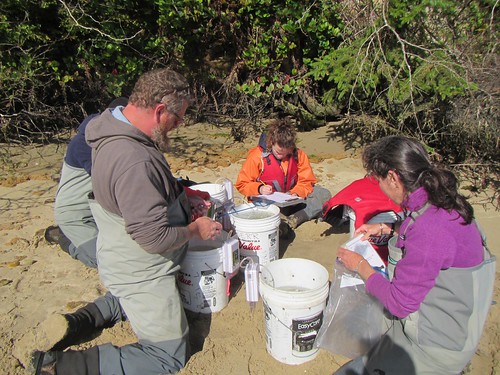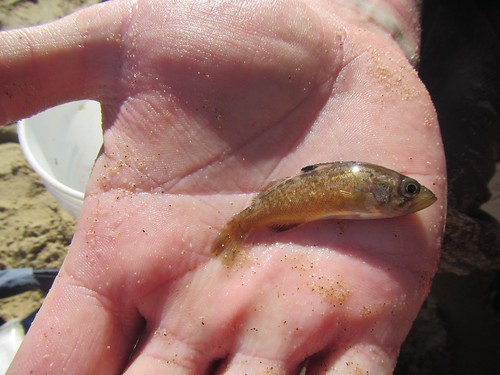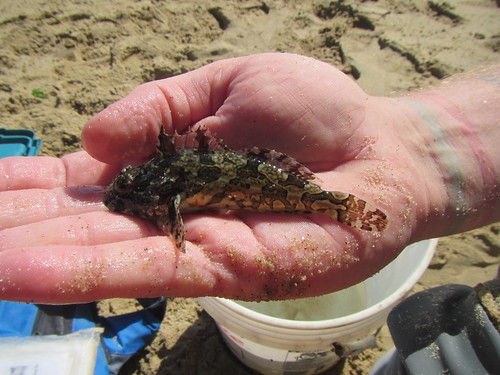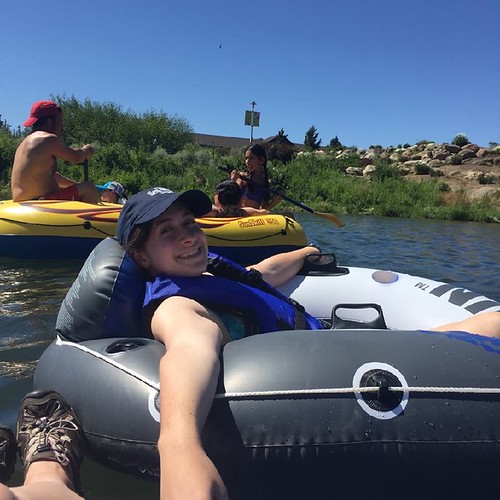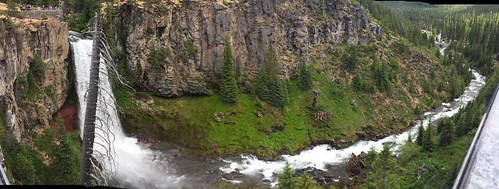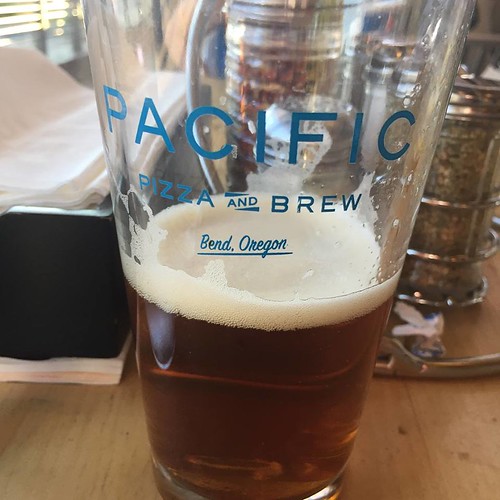These last couple weeks of my internship have been a lot of tying up loose ends. Last week, I was busy getting prepared for the final presentation and poster for the symposium in Newport. It took a lot of work, but it was fun to bring together everything that I’ve been working on this summer and show what we’ve been doing at the South Slough. I’ve also been trying to go explore places in Coos Bay one more time before I leave. Earlier last week, I drove down the Cape Arago peninsula again, and this time I finally saw seals at Simpson Reef! The day was really clear, so there was no fog obstructing the view of the rocks, and it was at low tide, so the maximum amount of rock was exposed for seals to haul out on.
This picture basically just looks like big rocks, but they’re covered in seals:
I also went to the Bandon Marsh National Wildlife Refuge and spent some time birdwatching. At the shore at Coquille Point, there were tons of gulls and cormorants on the large rock outcrops and feeding along the intertidal. Along the emergent saltmarsh at the Ni-les’tun Unit, I saw swallows and sparrows, a great egret, a turkey vulture, and a peregrine falcon.
The big rock outcrops at Coquille Point in the Bandon Marsh National Wildlife Refuge:
However, the past few weeks haven’t been all lasts, but also some new things.
- I finally saw whales in Oregon! Katie and I were heading up north from Newport after the symposium and stopped in Depoe Bay. Depoe Bay claims to have the world’s smallest harbor—and it is a perfect spot for whale watching. Over the course of a couple hours that we sat overlooking the bay, we saw hundreds of grey whale spouts, tons of whale backs, and a couple shots of flukes. I was so happy that I got to see whales before I left Oregon!!
- The best new thing—the eclipse. We were really lucky that the eclipse was happening this Monday, August 21st, only a couple days after our symposium in Newport. The path of totality passed right through Newport inland across Oregon. Coos Bay would see about 97% totality, but Katie and I decided to stay with my mom and sister at a friend’s house in Salem so that we could see the total eclipse.
We were really surprised there was basically no traffic getting to Newport or from Newport to Salem, because we had heard dire warnings about the millions of people coming to Oregon for the eclipse. On Sunday, we went to Silver Fall State Park, hiking an 8-mile loop that brings you past about 7 waterfalls. It was an awesome way to kill time before the eclipse.
Monday, Katie and I woke up early to claim a spot at a local golf course to view the eclipse. We definitely could have slept in a bit later, as only a couple dozen people ended up watching from the course. My family and friends came a bit later with food. It was amazing to just sit for the next couple hours, watching the moon slowly cover the sun. I had heard what eclipses would be like, but no description really prepared me for experiencing it. As totality neared, it got eerily dim and felt like I was looking at everything through a filter. Then the moon fully covered the sun, and it was instantly really dark. Streetlights came on, the horizon looked like sunset, and you could see the corona around the moon. The two minutes of totality felt like seconds. Before we knew it, the sun peeked out behind the moon, and we had to put our eclipse glasses back on.
My attempt to take a picture of the eclipse with my phone:
This whole summer—the fieldwork, research, hiking, camping—has been incredible, but I feel lucky that I got to end the summer with a once-in-a-lifetime experience that I may not have been able to see if I’d been somewhere else.

